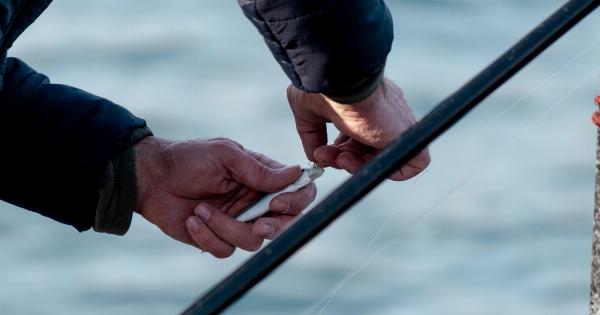Inaccurate fish marking is a pressing issue in the fishing industry that has far-reaching consequences.
It refers to the incorrect labeling or misidentification of fish species, which can lead to various negative impacts on both the environment and consumers. This article delves into the causes, impacts, and potential solutions for inaccurate fish marking.
1. Causes of Inaccurate Fish Marking
There are several factors that contribute to inaccurate fish marking:.
2. Lack of Proper Regulations
In many countries, inconsistent or inadequate regulations regarding fish labeling and identification lead to inaccuracies.
This allows unscrupulous individuals or businesses to take advantage of the loopholes, resulting in the mislabeling of fish species.
3. Complexity of Fish Identification
Identifying fish species accurately is a complex task, especially for non-experts or those unfamiliar with the intricacies of fish anatomy. This complexity can lead to unintentional errors in labeling, further exacerbating the problem.
4. Miscommunication in the Supply Chain
Due to the intricate nature of the fish supply chain, miscommunication can occur at various stages.
From the fishermen who catch the fish to the processors, distributors, and retailers, inaccuracies can arise due to poor communication channels or negligence in ensuring proper fish identification.
5. Economic Incentives
There can be economic incentives for mislabeling fish species. Certain species may be in higher demand or fetch higher prices, leading to the misrepresentation of lesser-known or lower-value species as more desirable ones.
6. Impacts of Inaccurate Fish Marking
The impacts of inaccurate fish marking are significant and multifaceted:.
7. Ecological Consequences
Inaccurate fish marking can have severe ecological consequences. When a species is mislabeled, it becomes challenging to assess its population size accurately.
Overfishing or underutilization of certain species can occur, disrupting the delicate balance of marine ecosystems.
8. Consumer Fraud
One of the most direct impacts of inaccurate fish marking is consumer fraud.
When consumers are deceived into purchasing mislabeled fish, they may unknowingly support unsustainable fishing practices or be exposed to potential allergens due to misidentified species.
9. Food Security
Inaccurate fish marking also threatens food security. As mislabeling occurs, the true availability of various fish species may be masked, making it difficult to implement effective fisheries management and conservation strategies.
10. Undermining Sustainable Fishing Practices
The mislabeling of fish undermines sustainable fishing practices by distorting market demand. As certain species are mislabeled as more desirable, their demand increases, potentially leading to overfishing and the depletion of these species.
11. Ways to Address the Issue
Several measures can be taken to mitigate inaccurate fish marking:.
12. Strengthening Regulations
To combat inaccurate fish labeling, it is crucial to enforce stricter regulations and guidelines. These should focus on accurate species identification, transparent labeling practices, and penalties for non-compliance.
13. Improved Traceability
Implementing technology-driven solutions to enhance traceability in the fish supply chain can help identify inaccuracies.
Blockchain and DNA barcoding can provide reliable methods to trace fish from the sea to the consumer’s plate, minimizing the chances of mislabeling.
14. Enhanced Collaboration
The key stakeholders in the fish industry, including fishermen, processors, distributors, and retailers, must collaborate closely to improve communication and ensure proper fish identification.
Sharing best practices and knowledge can help address inaccuracies throughout the supply chain.
15. Consumer Education and Awareness
Empowering consumers with knowledge about fish labeling, sustainable practices, and the risks of inaccurate marking can play a vital role.
Awareness campaigns and educational initiatives can help consumers make informed choices and contribute to the prevention of inaccurate fish marking.
16. Conclusion
Inaccurate fish marking poses significant challenges to both the environment and consumers. It disrupts ecosystems, leads to consumer fraud, threatens food security, and undermines sustainable fishing practices.
By strengthening regulations, improving traceability, fostering collaboration, and raising consumer awareness, the fishing industry can address this issue and pave the way for a more sustainable and transparent future.




























